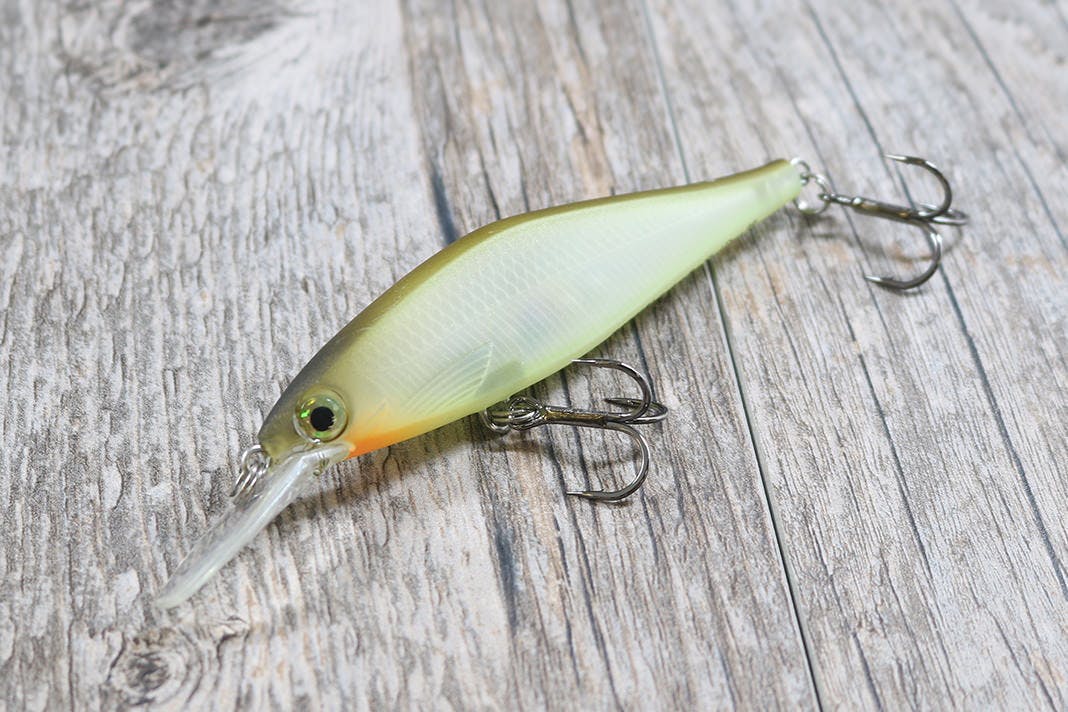
How To Fish A Jerkbait For Bass
There are few baits that can be worked like the jerkbait. It's more common to use one in cold water applications, although it can be effective throughout the entire year thanks to its ability to be adaptable to any given situation. When bass are lethargic, you can increase the pause. When bass are chomping, try using erratic twitches. This article is going to cover everything you need to know to put more fish in the boat with a jerkbait.
How To Use A Jerkbait
The first and most obvious factor in picking a jerkbait is diving depth. You want to pick a bait that can be worked at or slightly above the level fish are holding at. This gives them the ability to attack horizontally or slightly up, which is the preferred method for feeding fish. The common ranges are shallow, mid depth, or deep.
Most bait packages will say what they do on the pause, indicating the desired movement. The finicky thing with jerkbaits is that buoyancy will change depending on the water temperature. With the pause being such an important component of the retrieve, it’s worth it to make sure the bait is doing what you want it to do.
If you want it to do the opposite of what it is doing there are several ways to achieve that. If the bait is rising and you need it to suspend or sink, add weight to the lure. You can achieve this by adding larger hooks, include split rings, twist wire around the shank of a hook, or add suspend strips/dots to the body.
If you need the bait to suspend or rise when it’s sinking, take weight off the lure. You can achieve this by switching to smaller hooks or using lighter line.
Once you have the desired depth and buoyancy dialed in, try to match the size of the lure to the baitfish present in the body of water you are going to fish.
The final step is choosing the right colors, which can be simplified into 4 different options:
- More stained water: Shades of white
- Clear water with little to no wind: Natural translucent
- Clear water and windy: Foil plated (extra flash)
- Clear Water and cloudy or lowlight: Gold Flash
Choosing The Best Jerkbait Rods, Reels & Line
Jerkbait Rod
When selecting the proper rod for jerkbaiting, there are several things to consider. The first being length. Anywhere in the 6.6 to 7 ft range is ideal for working the bait back to the boat. It’s common to make short downward snaps of the rod to get the bait to react a certain way and shorter rods will help prevent you from smacking the water and disturbing what you are trying to do.
The second component is a fast, soft tip on a medium light to medium action rod. This will give you enough bend in the backbone to make a long cast but provide a short flex in the tip that is needed to help keep you from working the bait too much.
Jerkbait Reel
Proper reel selection really depends on time of year. When fishing cold water scenarios (early spring or late fall) opt for a slower gear ratio in the 5:1 range. That will keep you from working the bait too fast when fish are more lethargic and need a little more time to attack a bait. When fishing warmer water (summer suspended or schooling fish) up your reel speed to the 6:1 range so you can work the bait faster when fish are in hunt mode.
Jerkbait Line
The primary line choice for using a jerkbait is mono. Anywhere in the 8 – 12 pound range, depending on water clarity and depth you want to fish the bait at. Mono is the best option for two reasons. The first is the added stretch. With this reaction style bait, it is often better to have more give during the hookset, so you don’t pull the bait away from the fish. Mono gives the angler that delayed time. Monofilament will also not weigh the bait down like fluorocarbon will, avoiding the bait digging deeper on every jerk. With mono though, the angler does loose sensitivity. In that case it would come down to personal preference.
More: Seth Feider's Jerkbait Setup
How to Fish a Jerkbait
This bait is perfect for high percentage areas since it can be worked at a slower pace. Start by throwing it around visible structure like boat docks, brush piles, standing timber, channel swings, transitions areas and along grass lines. For offshore fishing look for creek channels, submerged timber, underwater points and ledges.
When you locate an area you want to target, make a long cast and crank the reel a couple times to get the bait down to the desired depth. Next, focus on the cadence of the retrieve. The trick is to find what the fish are reacting to at that very time. A common cadence and great starting point is a jerk, jerk, pause. Try that for a bit, if no bites switch it up.
Should the pause between jerks be longer or shorter? How many jerks in a series? How hard or soft should the jerks be? All are available options in switching up. The important thing is to not get stuck in one common cadence. Variety will help you learn what works best and ultimately put more fish in the boat.
Ready to learn more about jerkbait fishing? View Omnia Fishing's resources including gear, articles and videos.